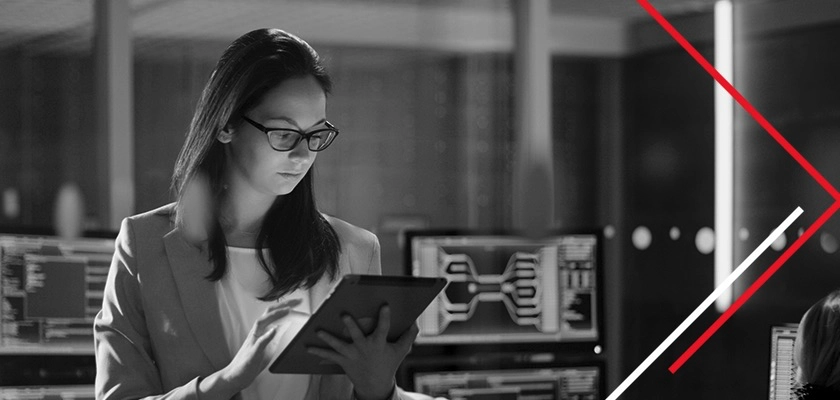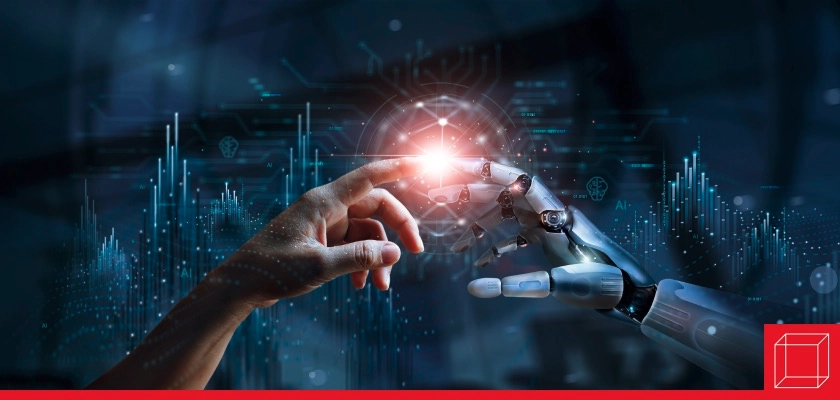"AI, Social Stratification, and Creative Destruction" - Richard Ellefritz, Ph.D. | October 2021
Artificial Intelligence (AI) is one of the newest technologies available. The power of AI rests in how we use it, recognizing its strength and weaknesses that can alter how we perceive the world.

Imagine if, when humans first learned to make and control fire, someone said, “We cannot allow this technology to spread, for it will surely consume the whole of the world.” Fire did spread around the world, but it has generally improved people’s lives despite its frequent role in the destruction of natural and built environments. Burning coal for power, rather than using watermills and windmills, revolutionized the world. It enabled steam-driven ships and locomotives to carry passengers and cargo quickly and efficiently across vast distances—as compared to horse and human-drawn carriages. Leading to the Industrial Age, coal-powered industrial plants employed multitudes spinning out textiles and other commodities, simultaneously urbanizing the world and raising the standard of living for the world’s population.
Artificial Intelligence (AI) is among the newest human inventions propelling the world into a new age. Like any technology, AI’s negative and positive potential rests in who is using it and for what purposes. While AI promises to progress civilization to new heights, sociologists Dr. Kelly Joyce and Dr. Susan Bell raise concerns, for example, over AI’s ability to separate correlation from causation and to consider social inequalities when used to analyze and forecast social trends.
If AI is used to analyze social trends in geographic regions, it might not be able to consider historical and structural circumstances that have caused the regions’ racial and class structures. For example, if AI is used to determine where to place new schools, hospitals, or social services, it would be necessary to take a sociological approach to enter data to ensure that AI does not make decisions that perpetuate inequalities. AI might interpret existing differences in racial and class segregation by community as natural, thereby overlooking histories of discrimination and the social policies that led to those circumstances.
Thus, AI learning should include an understanding of how social stratification is produced and reproduced to help alleviate inequalities, not exacerbate them. Consider, for example, if AI software did not take into account how property taxes are involved in creating and perpetuating educational inequalities in communities. It might not realize that a decision to, for example, increase the number or quality of schools in one community could create undue tax burdens for members of that community, who may already be experiencing higher levels of poverty and unemployment than neighboring communities.
That said, like any technology, the users and use of AI determine its ability to help, rather than hinder, human progress. And, like any technology, advancements in AI will cause creative destruction. Building on the writings of Charles Darwin and Karl Marx, Joseph Schumpeter popularized the concept of creative destruction in his 1942 book Capitalism, Socialism, and Democracy. Under capitalism, new ways of producing and distributing goods and services revolutionize entire industries. As a result, previous methods become less profitable and often disappear. Creative destruction has happened numerous times throughout history, leading to temporary setbacks for some but long-term advancements for humankind.
AI has already automated many mundane, tedious tasks, such as a data entry and analysis, which allows humans to spend time doing what AI cannot yet do: make meaningful judgements about the content of data. AI is replacing humans in many areas of work, but its future will depend on new occupations requiring skills and judgments only humans hold (currently). Let’s look at a historical example of how this works.
Consider the case of ice (the kind you put in your soft drinks): In the late 1800s and early 1900s, ice was a commodity only the wealthy could afford, and its industry employed thousands. Over time, icemakers (the kind you find in your freezer) upset the ice industry, eliminating thousands of jobs and dispelling those workers to other industries. However, it drastically lowered the price of this one-time luxury and turned it into a near necessity. Owners and laborers in the ice industry were probably disappointed by the transformation and disappearance of the source of their livelihoods, but our lives have been improved by the introduction of automated icemaking. If you like cold, fizzy soft drinks, think about how disappointed you might be if the icemaker broke down at your local theater.
Movies like the Terminator and The Matrix series forecast a future in which humans are dominated by AI-driven machines, but more prosaic movies like Her depict humans interacting with AI, sometimes preferring it to human-to-human interactions. At this moment, Facebook’s algorithms are promoting an AI companion system called Replika, which is designed to replicate a social interaction. Think of how this might benefit lonely people (for example, people who have lost loved ones or people with social anxiety) or how this might help people on the Autism spectrum “read” the intricacies of social dynamics. If and when AI is used to automate our lives, such as when Amazon, Google, YouTube, and Netflix offer you personalized suggestions or in the case of self-driving cars, people will need to build and maintain the machines. Like icemakers, the cost of commodities will come down as AI increases efficiencies in the automation of the production and distribution of (some) goods and services.
Questions for Discussion
- What industries do you think AI would be unable to automate? Why would humans be needed in those industries?
- Do you have trepidations about AI and automation? How are these similar to or different from how people felt in the past when new technologies like automobiles, calculators, the Internet, and smartphones overtook previous technologies?
- Is AI the same as other technologies, like the wristwatch, wheel, or fire, or is it fundamentally different? Does some research into AI to help form a fact-based answer? (Consider there are many competing visions of what AI is and where it is going.)
References
Drexel Now, April 13th, 2021
“The Future of Artificial Intelligence Requires the Guidance of Sociology.” By Emily Storz

